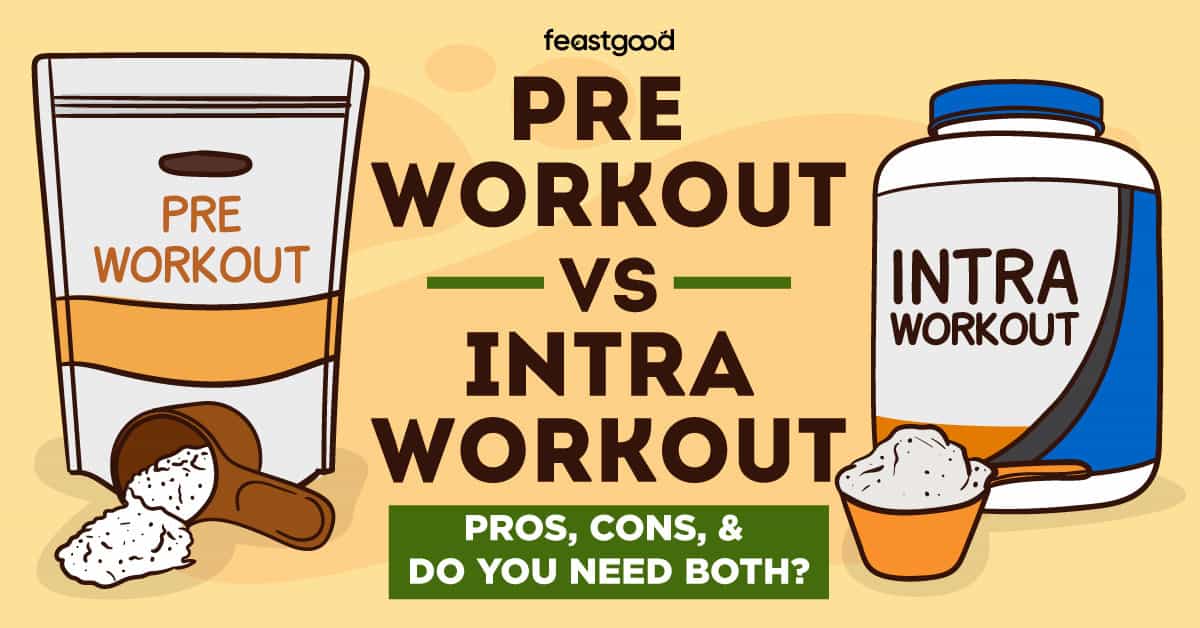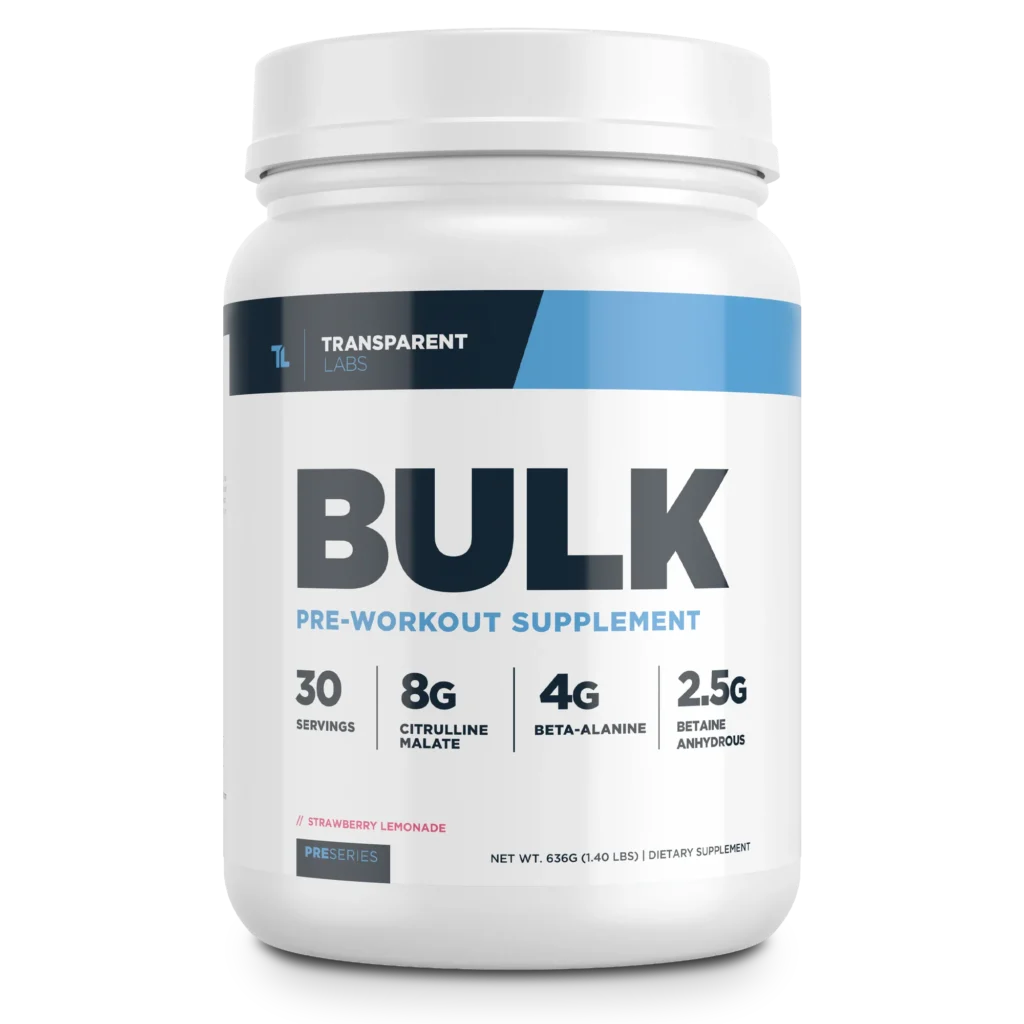Some links in this article are affiliate links, which means we earn from qualifying purchases. Learn more.
As a supplement store manager with a decade of experience, it’s my job to educate customers on the benefits of taking pre-workout and intra-workout supplements and the differences between them.
The main difference between pre-workout vs intra workout is that pre-workout provides energy and focus for your workouts due to ingredients like caffeine, while intra-workout is caffeine-free and provides ingredients like carbs and electrolytes to help maintain energy levels as well as increase your rate of recovery.
While a lot of these benefits of pre-workout and intra-workout are overlapping (like increased energy), there are some unique attributes to both that might leave you wondering if you should take one or the other, or both.
What Is Pre-Workout?
Pre-workouts are a category of supplements that provide short-term (1-2 hour) enhancements to energy, strength, endurance, blood flow, and mental focus.
They are typically available in blends of anywhere from 5 to 20 ingredients as flavored powders, but can also be purchased as single ingredients, as unflavoured powders, or in capsule form.
The benefits of pre-workouts will depend on which ingredients your pre-workout contains and the dosage of these ingredients.
Benefits of Pre-Workout
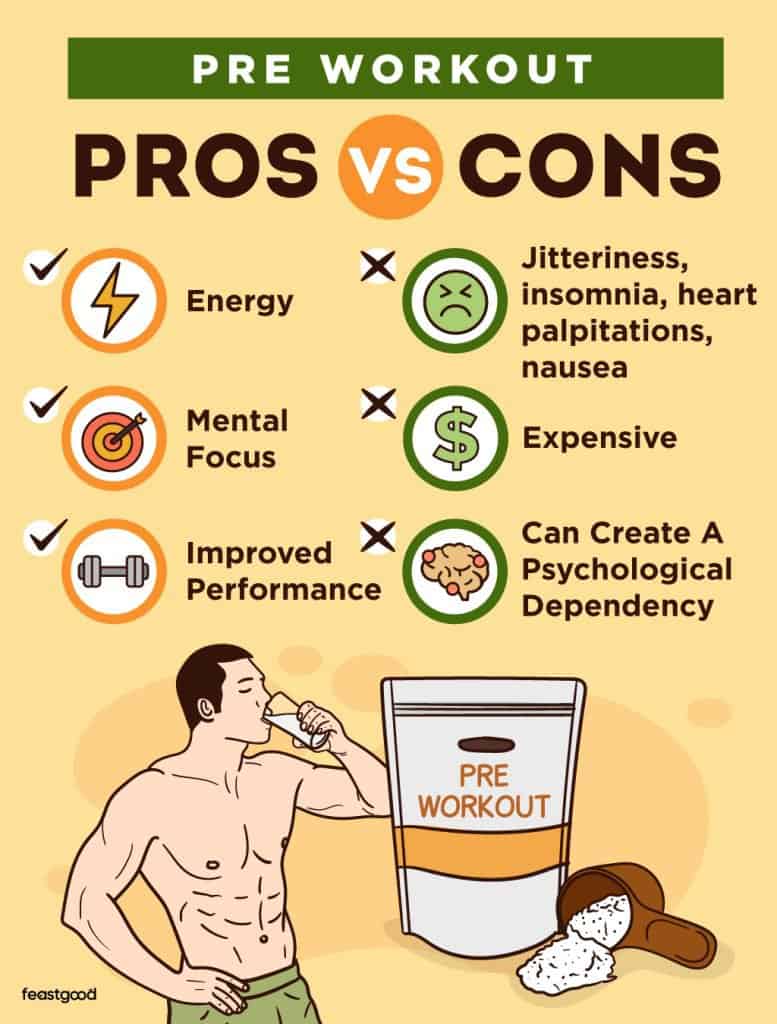
Energy
One of the most notable benefits of pre-workout is a fast-hitting increase in energy. Generally, this boost in energy comes from the inclusion of caffeine, with levels ranging anywhere from 125mg to 425mg per serving.
For reference, a small commercially bought coffee has around 140mg of caffeine.
This noticeable energy boost will typically last for anywhere from 90 minutes to 2 hours after ingestion, but caffeine can remain in your system for many hours afterward.
The half-life of caffeine is 5 hours, which means that every 5 hours the amount of caffeine remaining in your system will be halved.
So, if you have a pre-workout containing 300mg of caffeine at 5pm, you will still have 150mg from that pre-workout remaining in your system at 10pm.
If you plan to take pre-workout later in the day, you can consider a caffeine-free alternative like Axe & Sledge Hydraulic which has a lot of ingredients to support energy (and mental focus) without affecting your sleep.
Mental Focus
Alongside increased energy, there is a new branch of supplements called nootropics that are a common addition to pre-workouts.
Nootropic is the broad term for a chain of supplements that can increase brain power by way of increased mental focus, clarity, memory, and recall.
To take advantage of the increased mental focus, look for a pre-workout like Alani Nu Pre Workout with tyrosine and l-theanine.
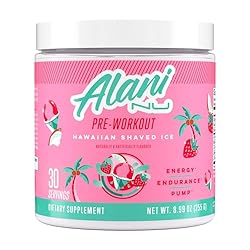
- Related: Alanin Nu Pre-Workout: My Review
Improved Performance
The great thing about pre-workout supplements is that they come in a variety of formulas and you can find one that is specific to your goals and training style.
For improved endurance, you might choose one with beta-alanine and electrolytes.
For increased strength and power output, look for creatine and branched-chain amino acids (BCAAs).
If you’re looking for enhanced blood flow and pump, watch for the ingredients l-citrulline or betaine (as trimethylglycine).
More often than not, a pre-workout will have a combination of ingredients to support all of the improved performance measures mentioned above: endurance, strength and power, blood flow, energy, and mental focus.
- Related: Pump vs Pre Workout: Differences, Pros, Cons
Drawbacks of Pre-Workout
Side Effects (jitteriness, insomnia, heart palpitations, nausea)
Due to their high caffeine content and number of ingredients, pre-workout supplements can cause negative side effects like jitteriness, insomnia, heart palpitations, or nausea.
Caffeine itself is the biggest culprit for each of these side effects because the type of caffeine that is typically used in pre-workouts is caffeine anhydrous. This form of caffeine is dehydrated, (anhydrous literally means “without water”) resulting in a highly concentrated and very quickly absorbed form of caffeine.
Because of the concentration and speed at which it is absorbed, caffeine anhydrous can cause an array of symptoms even for avid coffee drinkers. For this reason, it’s best to start with a lower dose (100-200mg) to test your tolerance.
Some other ingredients used in pre-workout can also contribute to the feeling of nausea, like creatine and glycerol.
It may be possible to reduce the severity or likelihood of nausea associated with pre-workout by either reducing the quantity of pre-workout taken at once or finding a product without these ingredients.
In doing so, however, you risk losing the effectiveness of your pre-workout by reducing or eliminating key ingredients which have clinical research behind them for improving athletic performance.
- Related Article: What Does Pre-Workout Feel Like? 7 Things You’ll Feel
Cost (can be expensive, especially if used daily)
Some commercially available pre-workouts can cost up to $3.00 per serving (like Ryse Godzilla, which comes in at $59.99 for 20 servings, if you go by the 2-scoop serving recommendation).
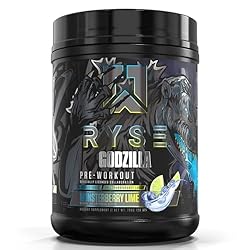
If you use your pre-workout for every single workout, at 4 workouts per week this can cost you over $600 per year. This cost is obviously even higher if you are using it for workouts 5-7 days per week.
The average pre-workout costs closer to $2.00 per serving, which can still add up to several hundred dollars over the course of the year.
While this isn’t a dealbreaker for everyone, if you are on a budget then it might not be feasible to add a high-quality pre-workout to your routine.
Can Create A Psychological Dependency
I hear the following phrases almost on a daily basis:
“I need my pre-workout”
“I can’t workout without my pre-workout”
Though sometimes people are just being dramatic, in my 15 years of experience I have had both customers and clients develop strong psychological dependencies on stimulant-based (caffeine-based) pre-workouts.
There is some nuance in the difference between a caffeine addiction and a caffeine dependency.
Addiction requires a specific chemical response in the brain, which doesn’t happen with caffeine.
A dependency, however, is when the central nervous system gets used to the caffeine, and you can experience a variety of withdrawal symptoms if you stop ingesting it (like headaches and fatigue).
Nuance aside, there are two key things that happen with prolonged use of caffeinated pre-workouts:
- Caffeine Tolerance Increases. Over time, the effects of the caffeine will dull and you will require higher and higher doses to elicit the same effects.
- Psychological Dependency. This is not a chemical addiction, but this is the belief that you cannot possibly do a workout without consuming a pre-workout.
To remedy either situation, my recommendation is to either take 2-4 weeks off of caffeinated products altogether to allow your body a slight reset or be proactive in not using your caffeinated pre-workout for every single workout.
What Is Intra-Workout?
Intra-workouts are a category of supplements that include any combination of Branched Chain Amino Acids (BCAAS), Essential Amino Acids (EAAs), Carbohydrates, and Electrolytes (like sodium, potassium, calcium, and magnesium) to help with stamina, electrolyte replenishment, hydration, and recovery.
These products are available as flavored powders and are meant to be sipped on throughout your workout, or consumed in between bouts of physical activity (i.e. during an intermission, in between matches).
Benefits of Intra-Workout
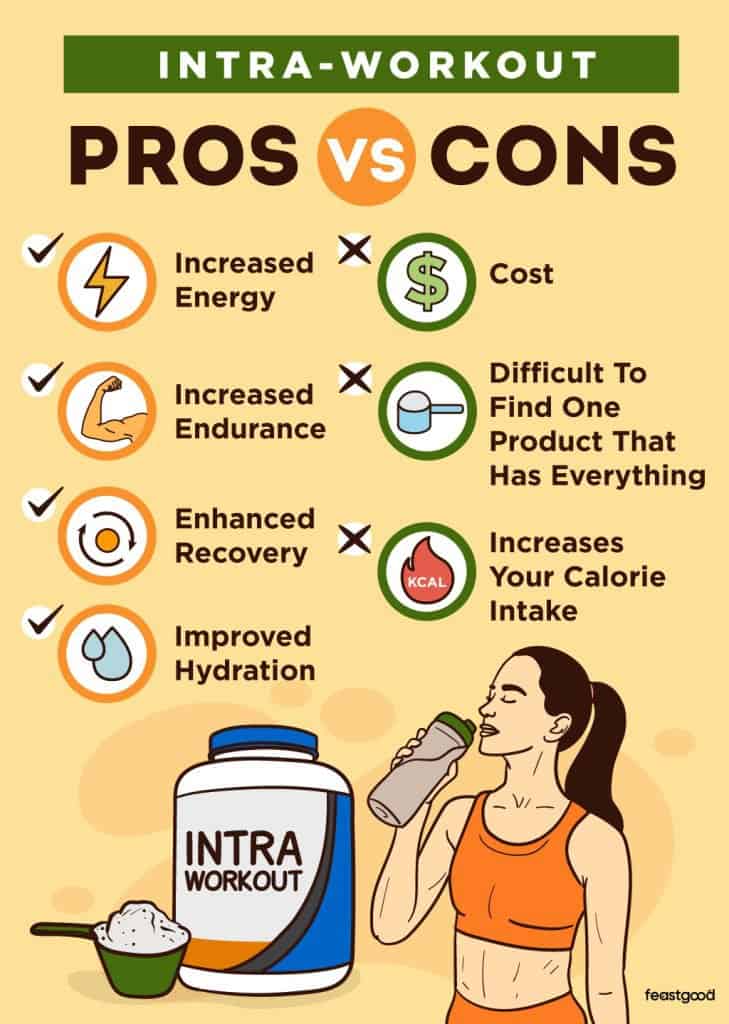
Increased Energy
Intra-workout supplements provide a different kind of energy than pre-workout. You can think of it in the sense of: Pre-workout gets you going, and intra-workout keeps you going.
These products are typically caffeine-free but provide energy in the form of easily-digested carbohydrates like maltodextrin.
These forms of sugar used in intra-workout supplements are very quickly digested and absorbed, providing a fast energy source.
Ingestion of carbohydrates during exercise (at a rate of 30-60g of carbohydrates per hour for high intensity exercise) like those present in intra-workout are correlated with improved performance while training by delaying fatigue.
That said, if you are not training at higher intensities or your training session is less than an hour, then an intra-workout may not be necessary as energy will likely not be depleted to the point where you would require additional carbohydrates.
Increased Endurance
If you want to improve muscular endurance, look for an intra-workout supplement that contains Essential Amino Acids (EAAs), PeakO2, or ElevATP.
In a study on previously untrained women, one group was given an EAA supplement over the course of six weeks while the other group received a placebo. At the end of the six-week training period, the group who supplemented with EAAs saw significant increases in aerobic muscular endurance.
Another promising ingredient in intra-workouts for endurance is performance mushrooms. Some mushrooms like cordyceps have been shown to increase stamina and work output in athletes, and can occasionally be found in intra-workout supplements in the form of PeakO2.
Benefits of consuming PeakO2 include increased exercise performance, with these effects being more pronounced with more prolonged use.
ElevATP (a combination of peat moss and apple extracts) is another fun ingredient to look for, as it’s which has been shown in clinical trials to increase levels of ATP in the body (the body’s energy molecule).
Finding an intra-workout supplement that has ElevATP is a way of consuming literal energy that will result in increased exercise output, helping you push farther and burn more calories during your workout.
If you’re looking for fast and noticeable improvements in endurance and work output, then I recommend Build XT by Jacked Factory which has both PeakO2 and ElevATP.
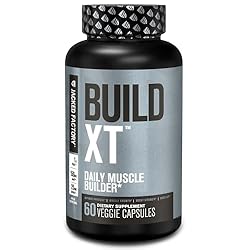
Enhanced Recovery
Intra-workouts can also enhance recovery because amino acids (especially BCAAs or Branched-Chain Amino Acids) play a key role in muscle recovery. One of the BCAAs, leucine, is considered the most important amino acid for muscle growth.
Protein synthesis (a precursor for muscle growth) is dependent on how much leucine is available in the body. During exercise, BCAA levels (including leucine) drop.
Supplementing with BCAAs during exercise helps to keep leucine levels high and encourages muscle growth and repair.
- Related Article: Do I Need BCAAs If I Take Whey Protein? (Yes, Here’s Why)
An intra-workout with BCAAs like Dymatize All9 Amino is especially helpful for those who don’t consume enough whole food sources of protein because these individuals may not have enough circulating leucine to promote muscle growth and recovery without supplementing.
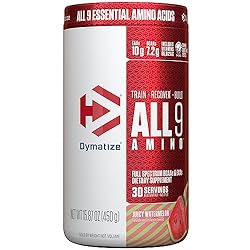
Improved Hydration
Another benefit to intra-workouts is that some of them contain electrolytes that can help to improve hydration levels.
Even slight dehydration can decrease performance so it’s important to stay hydrated before, during, and after training by replenishing fluids and electrolytes lost during exercise.
A 2011 study compared the effectiveness of a carbohydrate and electrolyte drink versus lemon tea or distilled water for restoring fluid balance after exercise during a short-term recovery period.
The study found that the carb and electrolyte beverage was more effective than the other two liquids for enhancing recovery from exercise.
To improve hydration and promote recovery following exercise, look for an intra-workout supplement like Allmax Carbion that contains the four key electrolytes: sodium, potassium, calcium, and magnesium.
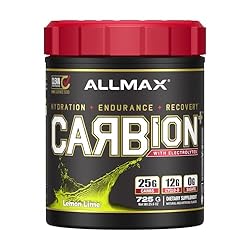
Drawbacks of Intra-Workout
Cost
Intra-workouts can be less expensive than pre-workout supplements and are available in larger quantities, but the cost can still add up quickly when used on a daily basis.
Most pre-workout supplements have 20 to 50 servings per product, but intra-workout supplements can range anywhere from 20 to 100 servings per product.
Buying the bulk sizes (100 servings) can save you some money per serving if you are able to make the investment upfront.
For example, buying a 20 serving will cost you around $1.25 per serving, compared to the 100 serving size which costs as low as $0.67 per serving.
That said, there is also a lot of variability in the cost of intra-workout supplements based on how many ingredients they contain.
An EAA+Electrolyte product, like Biosteel, will cost you between $0.75 and $1.40 per serving, depending on the size of the container you buy.
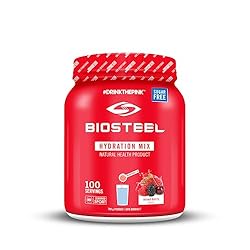
A carbohydrate and electrolyte product, like Allmax Carbion, is around $1.25 per serving.

A product that includes EAAs, electrolytes, and carbohydrates like Nutrabio Leg Day will bring you up to $3.00 per serving.
Difficult To Find One Product That Has Everything
As a supplement store manager who is an expert on supplements, I can tell you that it’s really difficult to find one intra-workout product that has all of the beneficial ingredients discussed above (carbohydrates, EAAs, and electrolytes).
There are many intra-workout options that have two out of three (like Biosteel and Carbion), but the only product available that has all three is Nutrabio Leg Day.
However, you may not want a product that has all three of these ingredients depending on what you’re trying to accomplish through training.
For example, if you are in a cutting phase you might not want an intra-workout with a ton of carbs, so you might prefer a low-calorie option like Biosteel that only has electrolytes and EAAs.
Increases Your Calorie Intake
An intra-workout carbohydrate drink can have between 25g and 50g of carbohydrates per serving, which equates to 100-200 extra calories per serving.
Consuming up to 200 extra calories daily could affect your physique goals if left unaccounted for.
This shouldn’t be a problem if your goal is to gain weight, because an intra-workout with carbs would simply help you add extra calories to your day which you would need to add mass.
However, if your goal is weight loss then these calories will need to be accounted for throughout the rest of your day so that you continue to lose weight at your desired pace.
Pre-Workout vs Intra-Workout: 6 Key Differences
| Pre-Workout | Intra-Workout | |
|---|---|---|
|
| |
|
| |
|
| |
|
| |
|
| |
Difference 1: Common Ingredients
The most common ingredients found in pre-workout include stimulants (usually a type of caffeine), vasodilators (like citrulline or betaine), and ingredients for endurance and strength like beta-alanine and creatine.
This combination of ingredients provides short-term increases in energy, mental focus, blood flow, and endurance.
An intra-workout supplement is much more heavily focused on replenishing things that are depleted during exercise, including electrolytes, amino acids, and muscle glycogen.
Difference 2: Nutrition Breakdown
With very few exceptions, pre-workout supplements are calorie and sugar-free and have medium-to-high levels of caffeine. They might have small amounts of electrolytes or b-vitamins added in but typically provide zero nutritional value.
There are some calorie and sugar-free intra-workout supplements available; however, most intra-workouts have 25-50g of carbohydrates per serving, adding 100-200 calories to your daily intake.
Intra-workouts also have high levels of electrolytes, with some (like Allmax Carbion) offering more than 10% of your recommended daily value of key electrolytes like magnesium.

Therefore, nutritionally intra-workouts have more to offer than pre-workouts.
Difference 3: Dosage and Consumption Method
Pre-workout supplements are taken with a small amount of water (just a few ounces) and for health safety reasons, you should not exceed one serving per day.
Intra-workouts are mixed with a much higher volume of water, between 500ml to 1L of water (or more, if you so desire). Intra-workout products can also be taken multiple times throughout the day as the ingredients are safer to consume in larger quantities.
For example, if you are participating in a tournament or competition, you might choose to sip on intra-workout supplements throughout the day to encourage hydration and recovery and prevent muscle cramping.
Difference 4: Timing
As you may have guessed, pre-workouts should be taken before workouts (anywhere from 15-30 minutes prior) and intra-workouts should be taken while you are working out.
Since they are mixed with a small amount of water, pre-workouts are typically consumed quickly in a few sips, while intra-workouts will be sipped over a longer duration.
Difference 5: Cost
While the breakdown of cost per serving is quite similar, there are some key differences.
You can find some pre-workouts for as low as $0.70 per serving, but most of the high-quality products will hit the higher end of the scale, between $2-$3 per serving.
You can find high-quality intra-workouts that cost less than one dollar per serving (products that only contain EAAs and Electrolytes); however, the carbohydrate-rich intra-workout products can hit the same cost as pre-workouts, at around $3.00 per serving.
An important consideration for the cost of these products is the frequency at which they should be used.
Pre-workouts might have a higher cost per serving on average, but shouldn’t be used for every single workout and shouldn’t exceed one serving per day.
Intra-workouts can safely be used every day and even multiple times per day. If you have multiple different training sessions throughout the day, really long training sessions (longer than 2 hours), or frequent competitions, then it’s likely that you will be taking multiple servings of your intra-workout supplement per day.
As a result, despite costing less per serving, you might end up investing more money overall on intra-workout supplements.
Difference 6: Overall Effect and Benefit
Perhaps the biggest difference between the two is the overall effect and benefit that will be felt from each of the products.
Pre-workouts provide fast-paced energy and focus that you can feel almost instantly upon ingestion.
Customers will often describe a noticeable energy increase, a “tunnel vision-like focus” or the skin-tingling effect (called paresthesia) from beta-alanine.
The benefits of intra-workout are expressed over time, and typically don’t have a particular “feel”. Rather, it’s the absence of sensations (like cramping or muscle soreness) that tells you that your intra-workout is helping.
Do You Need To Take Both Pre-Workout and Intra-Workout Supplements?
No, you don’t need to take both a pre-workout and an intra-workout. Truthfully, you don’t need to take either.
Both of these products are meant to supplement proper nutrition, not replace it. Technically, it is possible to get the benefits of these two products from whole food sources.
That being said, oftentimes our nutrition falls short for a variety of reasons, like a lack of convenience/planning or food allergies and dietary preferences, so you may want to take the plunge and invest in one or both of these supplements.
Who Should Take Pre-Workout
You should take a pre-workout if:
- You struggle with motivation and energy
- You workout first thing in the morning and struggle to wake up and get moving
- You feel exhausted after a stressful work or school day and need the mental focus and energy to start your workout
Who Should Take Intra-Workout
An intra-workout is a good option for you if:
- You feel like you “hit a wall” halfway through your workouts
- You experience frequent muscle cramping or excessive muscle soreness after working out
- You are an endurance athlete or have workouts lasting longer than 90 minutes
- You train in excessive heat/sweat a lot
- You are participating in a tournament or competition
- You are an athlete under the age of 18 (this is a good way to help young athletes improve athletic performance and recovery while staying away from caffeinated drinks)
- You have insufficient protein intake
Can You Take a Pre-Workout and an Intra-Workout Supplement At the Same Time?
You can absolutely take both pre-workout and intra-workout if your budget allows it.
Taking both supplements is a great strategy to optimize your workouts, allowing you to keep the intensity high and keep you fueled for optimal strength, performance, and recovery.
Pre-workout and intra-workout won’t be mixed together as they have different times when they are most beneficial, but there is no harm in consuming them on the same day.
The best way to use these supplements in combination is to:
- Use a caffeinated pre-workout intermittently, only when absolutely necessary for increasing energy and mental focus, to avoid building a psychological dependency and increasing your caffeine tolerance.
- Use an intra-workout supplement containing EAAs and electrolytes on a consistent basis, and consider consuming additional servings and/or one containing easily digested carbohydrates for prolonged exercise (marathons, tournaments, competitions).
What To Read Next:
- Is It Bad To Take Pre-Workout Every Day? (3 Drawbacks)
- Caffeine Pills vs Pre Workout: Pros, Cons, & Which Is Best?
- Creatine vs Pre Workout: Are They The Same? (No, Here’s Why)
- Does Pre-Workout Make You Sweat More? (9 Reasons)
References
Institute of Medicine (US) Committee on Military Nutrition Research. Caffeine for the Sustainment of Mental Task Performance: Formulations for Military Operations. Washington (DC): National Academies Press (US); 2001. 2, Pharmacology of Caffeine. Available from: https://www.ncbi.nlm.nih.gov/books/NBK223808/
Javier Zaragoza, Grant Tinsley, Stacie Urbina, Katelyn Villa, Emily Santos, Angelie Juaneza, Matthias Tinnin, Cory Davidson, Susan Mitmesser, Zhiying Zhang & Lem Taylor (2019) Effects of acute caffeine, theanine and tyrosine supplementation on mental and physical performance in athletes, Journal of the International Society of Sports Nutrition, 16:1, DOI: 10.1186/s12970-019-0326-3
Giesbrecht T, Rycroft JA, Rowson MJ, De Bruin EA. The combination of L-theanine and caffeine improves cognitive performance and increases subjective alertness. Nutr Neurosci. 2010 Dec;13(6):283-90. doi: 10.1179/147683010X12611460764840. PMID: 21040626.
Jeukendrup A. A step towards personalized sports nutrition: carbohydrate intake during exercise. Sports Med. 2014 May;44 Suppl 1(Suppl 1):S25-33. doi: 10.1007/s40279-014-0148-z. PMID: 24791914; PMCID: PMC4008807.
Antonio J, Sanders MS, Ehler LA, Uelmen J, Raether JB, Stout JR. Effects of exercise training and amino-acid supplementation on body composition and physical performance in untrained women. Nutrition. 2000 Nov-Dec;16(11-12):1043-6. doi: 10.1016/s0899-9007(00)00434-2. PMID: 11118822.
Hirsch KR, Smith-Ryan AE, Roelofs EJ, Trexler ET, Mock MG. Cordyceps militaris Improves Tolerance to High-Intensity Exercise After Acute and Chronic Supplementation. J Diet Suppl. 2017 Jan 2;14(1):42-53. doi: 10.1080/19390211.2016.1203386. Epub 2016 Jul 13. PMID: 27408987; PMCID: PMC5236007.
Plotkin, D. L., Delcastillo, K., Van Every, D. W., Tipton, K. D., Aragon, A. A., & Schoenfeld, B. J. (2021). Isolated Leucine and Branched-Chain Amino Acid Supplementation for Enhancing Muscular Strength and Hypertrophy: A Narrative Review, International Journal of Sport Nutrition and Exercise Metabolism, 31(3), 292-301. Retrieved Jul 7, 2023, from https://doi.org/10.1123/ijsnem.2020-0356
Breen L, Churchward-Venne TA. Leucine: a nutrient ‘trigger’ for muscle anabolism, but what more? J Physiol. 2012 May 1;590(9):2065-6. doi: 10.1113/jphysiol.2012.230631. PMID: 22548909; PMCID: PMC3447149.
P. V. Ravindra, P. Janhavi, S. Divyashree & S. P. Muthukumar (2022) Nutritional interventions for improving the endurance performance in athletes, Archives of Physiology and Biochemistry, 128:4, 851-858, DOI: 10.1080/13813455.2020.1733025
Wong SH, Chen Y. Effect of a carbohydrate-electrolyte beverage, lemon tea, or water on rehydration during short-term recovery from exercise. Int J Sport Nutr Exerc Metab. 2011 Aug;21(4):300-10. doi: 10.1123/ijsnem.21.4.300. PMID: 21813913.
About The Author

Jennifer Vibert is a Certified Strength and Conditioning Specialist, Nutrition Coach, and supplement store manager. She has a Bachelor of Kinesiology with a major in Fitness and Lifestyle and a minor in Psychology from the University of Regina. She is a Certified Nutrition Coach through Precision Nutrition, with a passion for helping clients learn the fundamentals of nutrition and supplementation in order to build healthy, sustainable habits.
Why Trust Our Content

On Staff at FeastGood.com, we have Registered Dietitians, coaches with PhDs in Human Nutrition, and internationally ranked athletes who contribute to our editorial process. This includes research, writing, editing, fact-checking, and product testing/reviews. At a bare minimum, all authors must be certified nutrition coaches by either the National Academy of Sports Medicine, International Sport Sciences Association, or Precision Nutrition. Learn more about our team here.
Have a Question?
If you have any questions or feedback about what you’ve read, you can reach out to us at [email protected]. We respond to every email within 1 business day.
